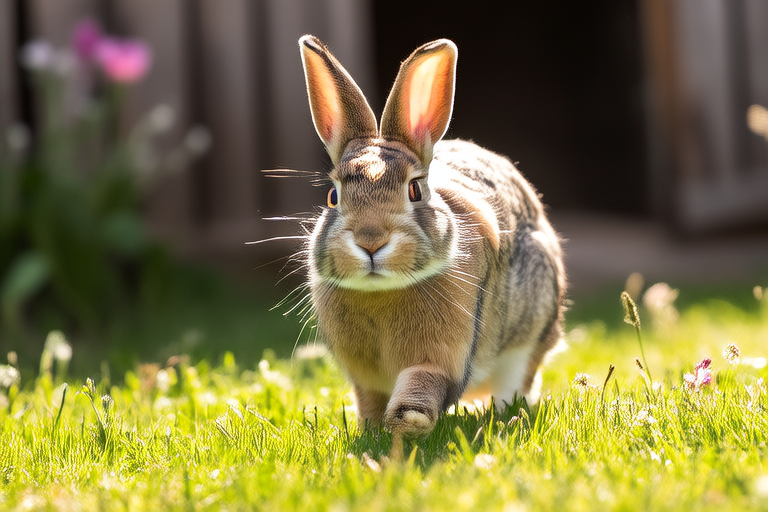From Barnyard to Backyard: The Journey of Lop Rabbits as Family Pets
Lop rabbits, known for their distinctive floppy ears, have long been cherished for their gentle demeanor and striking appearance. Originating from the barnyards of Europe, these rabbits have undergone a remarkable transformation from farm animals to beloved family pets. This article explores the fascinating journey of lop rabbits, providing insights into their temperament, care requirements, and the joy they bring to households across various settings.
The Origins of Lop Rabbits
Lop rabbits have a rich history that dates back centuries. Originally bred in medieval Europe, they were primarily used for meat and fur production. Their large size and robust bodies made them ideal candidates for barnyards where they thrived in the company of other farm animals. Over time, selective breeding led to the development of smaller, more docile varieties, which eventually found their way into homes as companions rather than livestock.
The Transition from Farm Animals to Family Pets
The shift from farm animals to family pets was gradual but significant. As farming practices evolved, the demand for lop rabbits as a source of food diminished. Simultaneously, there was a growing appreciation for the companionship and charm these rabbits offered. Their calm and affectionate nature made them particularly appealing as household pets. Today, lop rabbits are popular among pet enthusiasts for their friendly disposition and adaptability to various living environments.
Temperament and Suitability for Different Households
Lop rabbits are renowned for their gentle and affectionate personalities. They are generally calm and easygoing, making them excellent companions for both children and adults. Their docile nature also means they are less likely to cause trouble in the home. However, it’s important to note that each rabbit has its own unique personality, so potential owners should spend time getting to know individual rabbits before making a commitment.
These rabbits are well-suited for families looking for a low-maintenance pet that provides companionship without requiring excessive attention. They are relatively quiet and do not typically make loud noises, making them ideal for apartment dwellers. Additionally, lop rabbits are intelligent and can be trained to perform simple tasks, such as coming when called or using a litter box.
Care Requirements
Proper care is essential for ensuring the health and happiness of your lop rabbit. A spacious indoor or outdoor hutch provides a safe and comfortable living space. The hutch should be well-ventilated, weatherproof, and equipped with bedding material like hay or straw. It’s important to provide ample space for your rabbit to move around and stretch its legs.
Diet is another crucial aspect of lop rabbit care. A balanced diet consisting of hay, fresh vegetables, and a limited amount of pellets is recommended. Fresh water should always be available. Regular grooming helps maintain their coat and prevents matting. Lop rabbits should be brushed at least once a week to remove loose hair and prevent hairballs.
Veterinary care is vital for preventing and treating illnesses. Regular check-ups, vaccinations, and prompt treatment of any health issues are necessary to ensure a long and healthy life for your pet.
Transitioning from Rural to Urban Settings
For those considering adopting a lop rabbit from a more rural setting, there are several steps to take to ensure a smooth transition to an urban or suburban backyard environment.
- Gradual Introduction: Introduce your new rabbit to its new surroundings gradually. Allow it to explore its new home at its own pace, providing familiar items like toys or bedding from its previous environment.
- Safe Outdoor Enclosure: If you plan to keep your rabbit outdoors, ensure the enclosure is secure and predator-proof. Provide shade, shelter, and protection from harsh weather conditions.
- Supervision: Supervise your rabbit whenever it is outside its enclosure to ensure its safety and prevent escapes.
- Indoor Adaptation: If you prefer to keep your rabbit indoors, provide a dedicated space with a comfortable hutch or cage. Rabbit-proof the area by removing any hazards and providing plenty of chew toys.
The Unique Bond Between Lop Rabbits and Families
The bond between lop rabbits and their human families is truly special. These gentle creatures can form deep, lasting relationships with their owners. Many owners report that their rabbits respond to their names, show signs of affection, and even develop preferences for certain individuals within the household.
Owning a lop rabbit comes with responsibilities, including providing proper care, attention, and a loving environment. The joy of having a lop rabbit as a pet lies in the companionship and unconditional love they offer. They bring a sense of peace and comfort to homes, making them cherished members of the family.
In conclusion, lop rabbits have come a long way from their origins in barnyards. Their transformation into beloved family pets is a testament to their endearing qualities and adaptability. With proper care and attention, lop rabbits can thrive in various living environments, bringing joy and companionship to families everywhere. Consider adopting a lop rabbit and experience the unique bond these gentle creatures can form with their human families.
